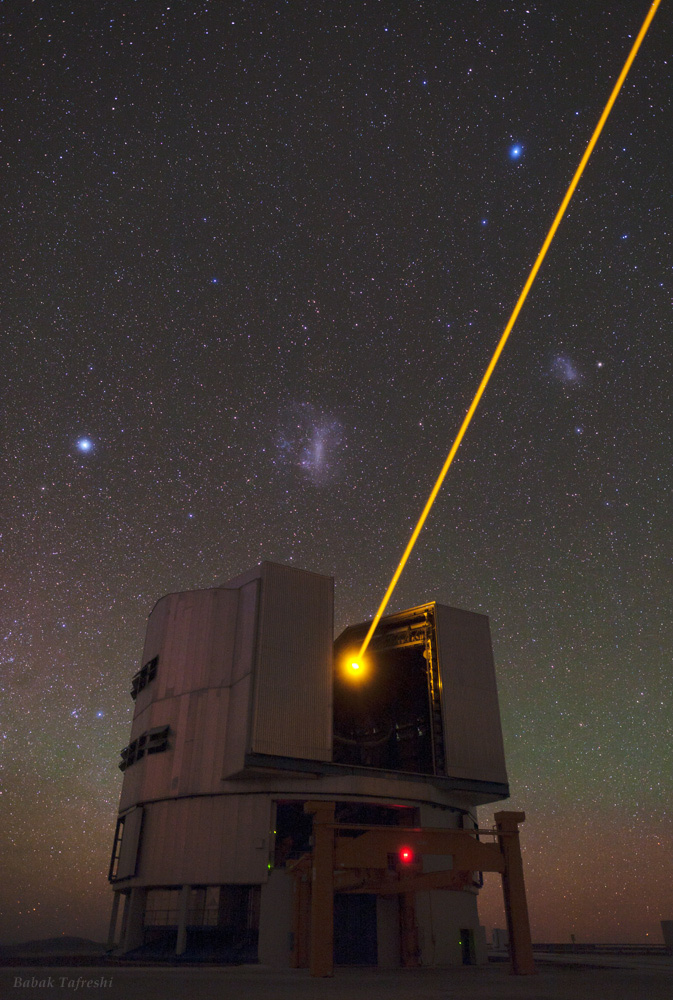Beamer Telescope
Description
One of the four 8-meter VLT telescopes (Very Large Telescope) located in the European Southern Observatory (ESO) site on Cerro Paranal is photographed under starry sky of Atacama Desert in Chile. Strong laser of Adaptive Optics system is beamed to the sky from the telescope. Our galactic neighbors, the Magellanic Clouds, and two bright stars of the southern sky, Canopus (left) and Achernar (top-right) highlight the image. Both red and green airglow were active at the night and captured near the horizon (airglow is an atmospheric phenomenon, faint natural night-time radiation of upper atmosphere). As explained by the European Southern Observatory “one of the major difficulties of astronomers is the Earth’s atmosphere, which makes celestial objects appear blurry when observed by ground-based telescopes. To counteract this, astronomers use a technique called adaptive optics, in which computer-controlled deformable mirrors are adjusted hundreds of times per second to correct for the distortion of the atmosphere. Astronomers beam a powerful yellow laser into the sky from the observing telescope. The beam creates a glowing spot — an artificial star — in the Earth’s atmosphere by exciting a layer of sodium atoms at an altitude of 90 km. This Laser Guide Star is part of the VLT’s adaptive optics system. The light coming back from the artificial star is used as a reference to control the deformable mirrors and remove the effects of atmospheric distortions, producing astronomical images almost as sharp as if the telescope were in space.”

comments (1)
so beautiful…
June 24, 2012 at 2:42 am